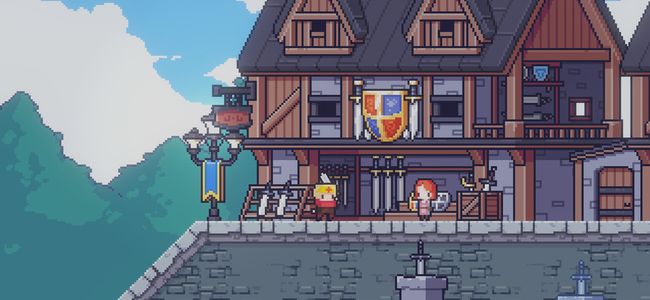The Stats
In terms of stats, there’s very little in the game that will change the skills you use to play it – so stats comes down completely to a numbers game, with only a little room for personal preferences.
Other Dungreed Guides:
Defense
Is straight damage reduction – it takes a percentage of the damage you would be dealt away from your actual damage. It scales quite well for the first 40-50 points put into it, but becomes exponentially more expensive to increase even a single percentage point as time goes on. In a normal run, your defense should be between 25% and 35% for the latter half of the game, likely reaching 20% before fighting Tunak, the jungle boss.
Toughness
Is a difficult stat to build, but absolutely worth it. Toughness is flat damage reduction, and applies after Defense. This means that with even a few points of toughness, you can facetank enemy attacks well into the magma and forest areas. Generally, if you can reach 6-8 points of toughness, you’ll be able to laugh off most enemy attacks well into the final area. Every attack will always do at least 1 point of damage though – so don’t stop dodging!
Evasion
This stat provides a chance to flat-out ignore damage. Evasion scales quite well until you’ve put about 40 points into it, and actually scales better than Defense past that point. It’s not uncommon for me to end a run with a 40-45% chance to completely evade attacks.
Block
Like Evasion, this is a chance to flat-out ignore damage. The percentage chance appears to scale on a 1:1 ratio with the points put into it, but the catch is that it’s very rare, mostly appearing on shields.
Power
A straight percentage multiplier for all your attacks. 10 power means you’ll be doing 110% of your normal base damage. At 100 power, you’ll be doing 200% of your base damage per attack. Since you get power from all common food, you should have no trouble increasing this to 60-80 at a minimum by the end of the game, though it can often get as high as 130 or more. While it seems like it ought to be a flat DPS increase, keep in mind that because many enemies have Toughness, it actually has a weaker effect on low-damage attacks. 100 power may not increase your DPS by 100%, especially for low-damage attacks.
Critical chance
The chance for a critical hit. Critical hits have a baseline damage of an extra 100%, so this is a very strong stat when combined with high power – stacking multipliers on multipliers is a great way to build damage, and can make even weak weapons sufficient for the final bosses.
To put it another way: increasing critical chance by 10% can be considered the same as increasing your DPS by 10% – and if your critical multiplier is better than 100% (the baseline), it increases even faster. This is usually the second-fastest way to increase your damage, and it’s not uncommon for me to end a run with at least 50-60% critical chance. Plus, the most overpowered item in the game relies on your critical chance to work – so don’t skimp here!
Critical damage
Affects the damage multiplier for critical hits. If you have a 50% critical chance, increasing critical damage by 20% will increase total dps by 10%. The math is pretty simple, in that every increase in your critical damage gets multiplied by your critical chance to determine how much it affects your DPS as a whole.
True damage
This damage is unaffected by your power or critical hits, but is also unaffected by enemy defenses and applies to every attack. It mainly works with rapid, low-damage attacks like those from a machine gun, and also applies to auto-attack accessories. True damage makes for some truly powerful builds but doesn’t benefit from power or critical chance, so it’s only worth taking if you know you plan on using a rapid-fire weapon.
Attack speed & Reload speed and Movement speed
Exactly what they sound like. Attack speed applies to all of your attacks, but not to auto-attack accessories.
